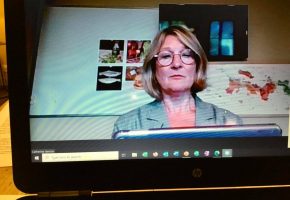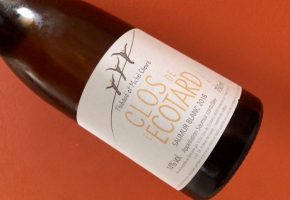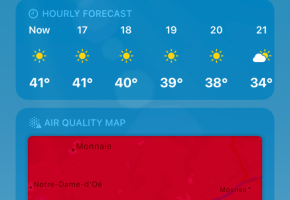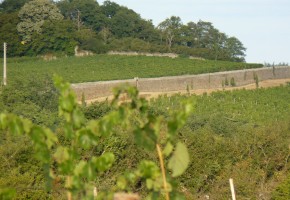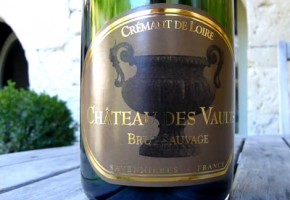
French wine labels can be tricky to understand. The combination of unfamiliar vocabulary and a different language can make it difficult for you, the consumer to understand what’s in the bottle.
Here are a few pointers to help you out.
French wine is sold in three different categories and the first one I’m going to talk about is:
Appellation d’Origine Contrôlée or Appellation d’Origine Protegée
Take a look at this label here:

You see the words Appellation Vouvray Contrôlée. You’re probably familiar with the phrase je m’appelle (my name is or I am called). Here it means the name of Vouvray is controlled.
Vouvray is a village and it gives its name to the appellation but there are in fact 8 villages within the geographic zone of production.
Each appellation has a set of rules that defines the grape variety or varieties that can be used, methods of pruning, planting density, date of harvest and many other things as well.
If a grower wishes to sell his or her wine as a Vouvray then he or she must obide by the rules in order to put the words Appellation Vouvray Contrôlée on the label.
Chenin Blanc is the grape variety used in Vouvray so if you see a bottle of Vouvray in a shop, it will always be Chenin Blanc.
Sometimes the grower will mention the grape variety on the label and sometimes they won’t. These wines are all about the PLACE where they are grown.
Also on the label you see the words Domaine Vincent Carême. A domaine is an estate. This is the name of the estate or winery that makes the wine. Vincent Carême is one of the top winemakers in the Vouvray appellation.
2017 is the year from which the grapes were picked. This wine comes from grapes that were picked in 2017. This is a vintage – wine that comes from grapes picked from a single year.
Other wines that you buy may come from a blend of wines from more than one year in which case you won’t see a year mentioned on the label.
Underneath 2017 you see the words ‘Le Peu Morier‘. This is the name of the wine. Often a wine will be named after a particular plot of vines which is the case here.
Now let’s have a look at the back label:

You see some of the information repeated here. The name of the appellation, the name of the wine and the vintage.
You also see the words Val de Loire – this wine comes from the Loire valley.
There is a tasting note in both French and English (you won’t always find that on a French wine) but it’s useful. It tells you the grape used is Chenin Blanc and gives you information about how it has been made.
There is a green leaf and a green AB. This tells you that Domaine Carême is a certified organic estate(Certifié Agriculture Biologique).
If an estate is certified organic then it is not permitted to use any artificial chemicals, herbicides or pesticides in the vineyard or the winery.
You see the words ‘Mis en bouteille par Vincent Carême’ and then an address. Mis en bouteille means put into bottle. Bottled by Vincent at his own winery in Vernou sur Brenne here in the Loire valley.
13.5% is the amount of alcohol in the wine.
The circle with the pregnant lady that has a line through it tells you not to drink wine when expecting a baby!
Interestingly this wine has a scale that tells you how dry or sweet the wine is. On the left of the guide is says sec (which means dry) and on the right hand side it says moelleux (sweet). This is a dry wine as you can see from the marker on the scale.
Last not but least it mentions that the wine contains sulphites. All wine contains sulphites and they are quite wrongly blamed for the entire world’s headaches.
Sulphites are typically added at bottling to prevent oxidation or microbial spoilage. The level of sulphites permitted differs from country to country.
Organic growers use very low levels of sulphites and even if NO sulphites have been added during the winemaking process or at bottling, you’ll find tiny amounts of sulphites in the wine (another post to go into this in more detail).
I’ve not talked about Appellation d’Origine Protegée have I? This is just the EU equivalent of Appellation d’Origine Controlée. It translates as protected name of origin. What is controlled or protected is identical.
Appellation wines are all about place. The grape is of course very important but the place where the grapes are grown will affect the taste of the wine.
This can be frustrating for English speaking wine lovers who have no alternative but to learn which grape is grown in which appellation.
I’ll post a couple more examples over the coming days as labels vary but I hope this has been helpful to those of you trying to unravel the mysteries of French wine labelling.
Please feel free to leave any comments or ask any questions.
